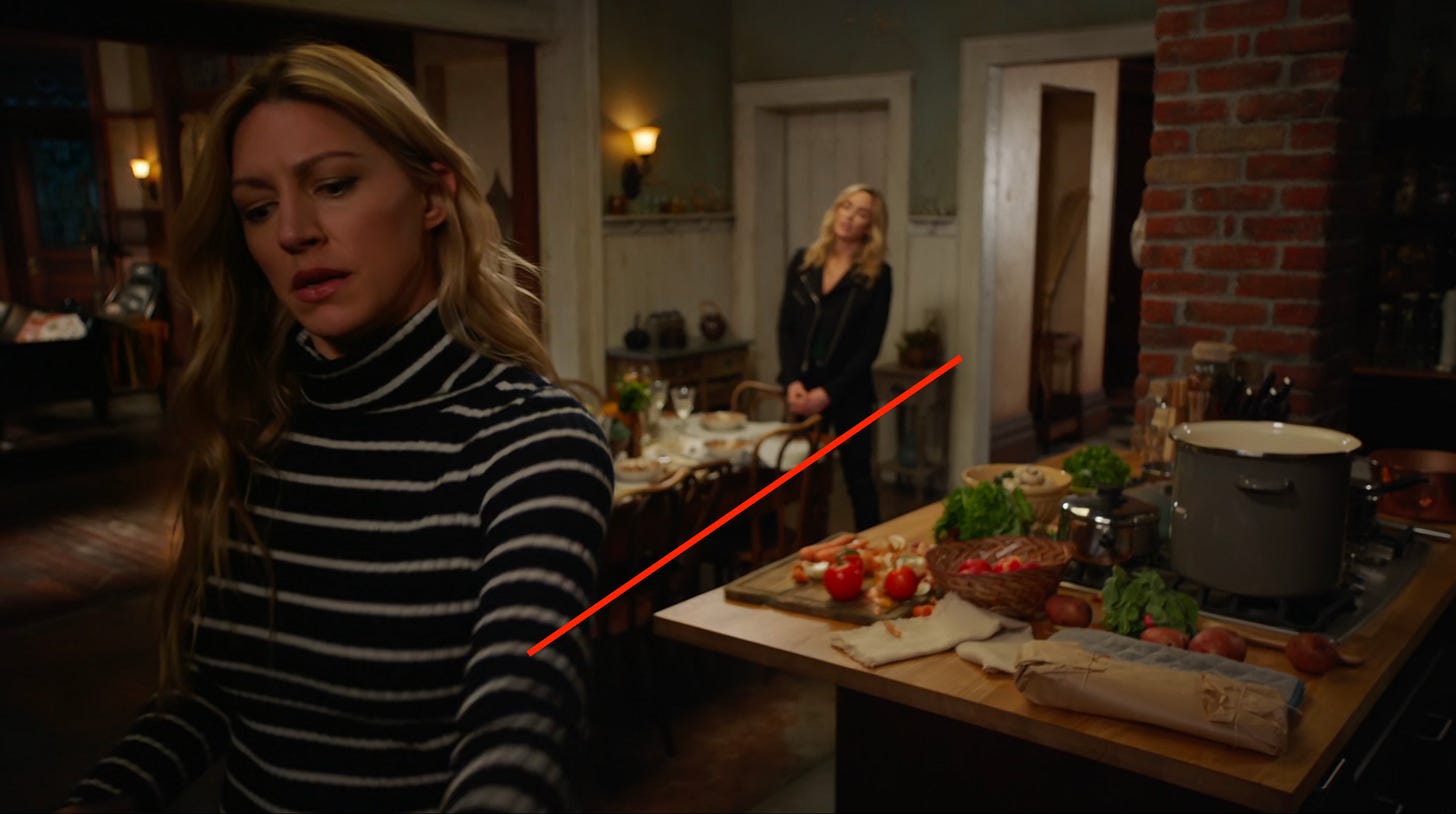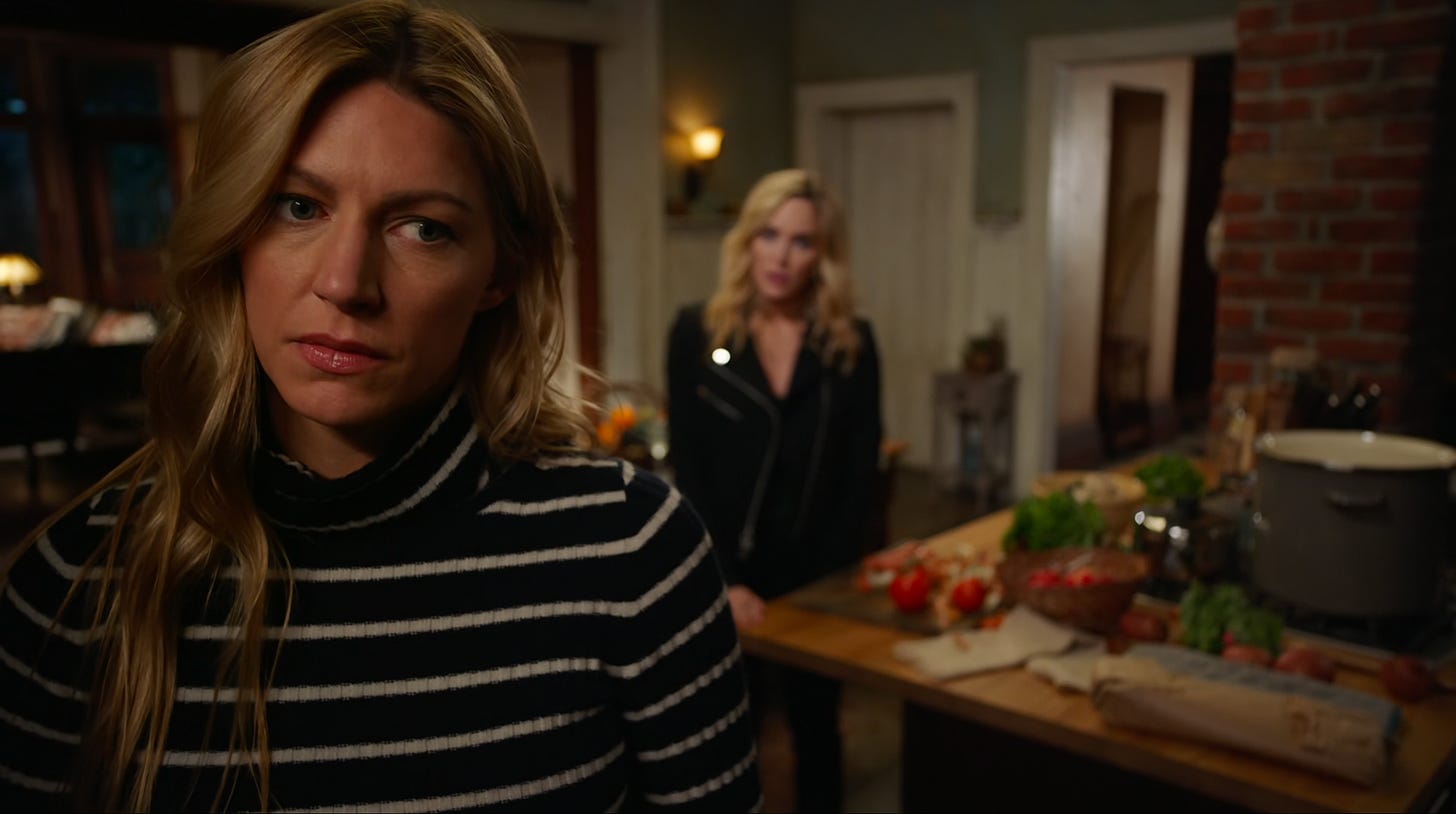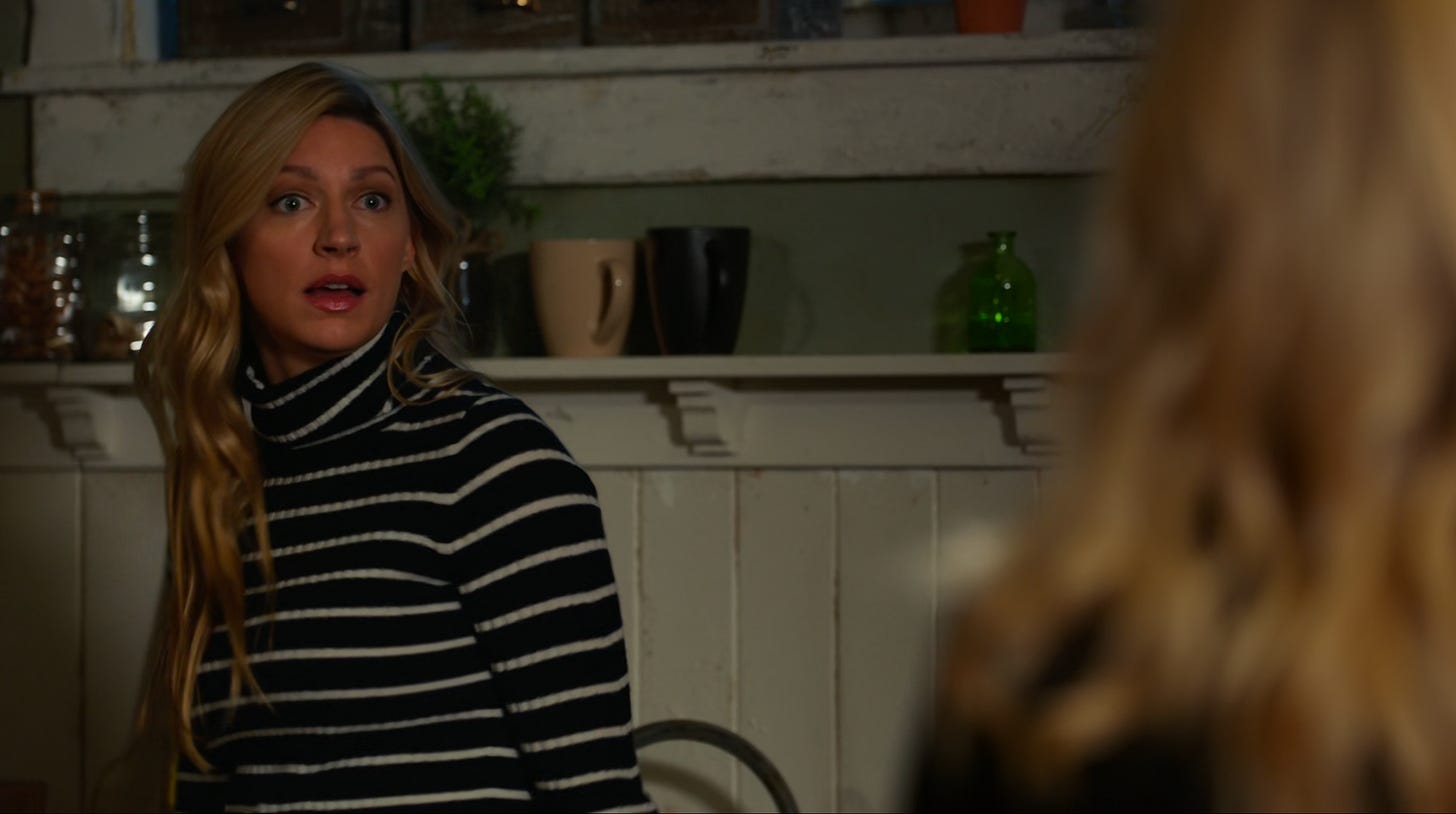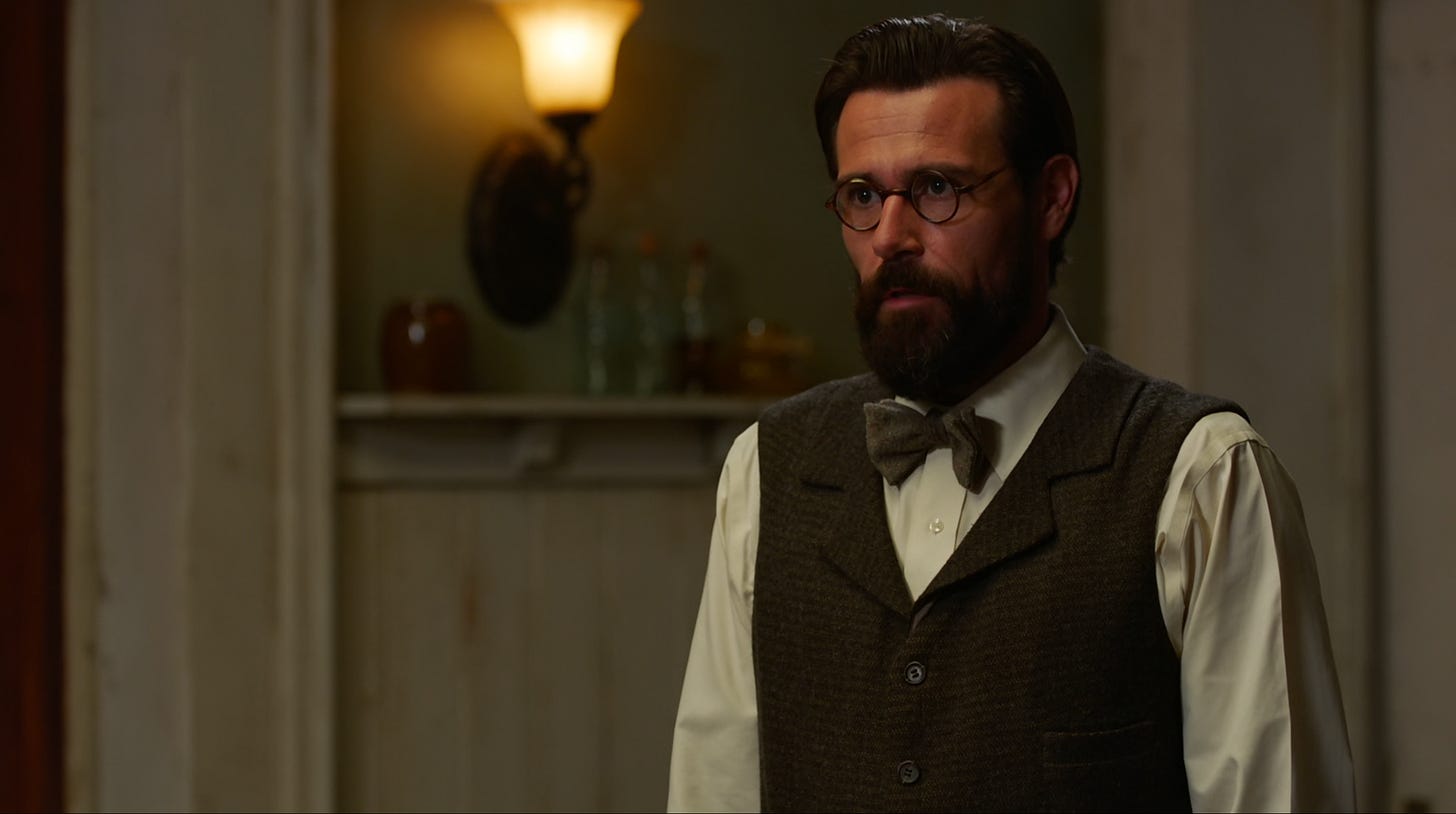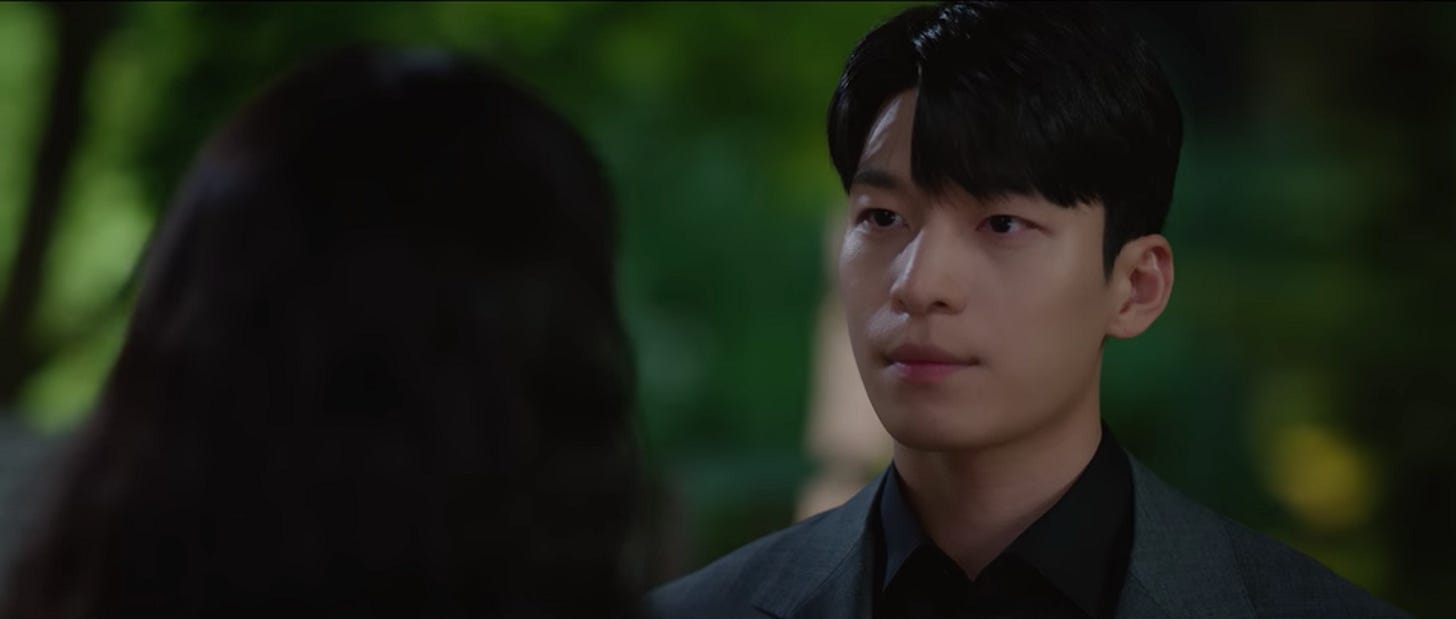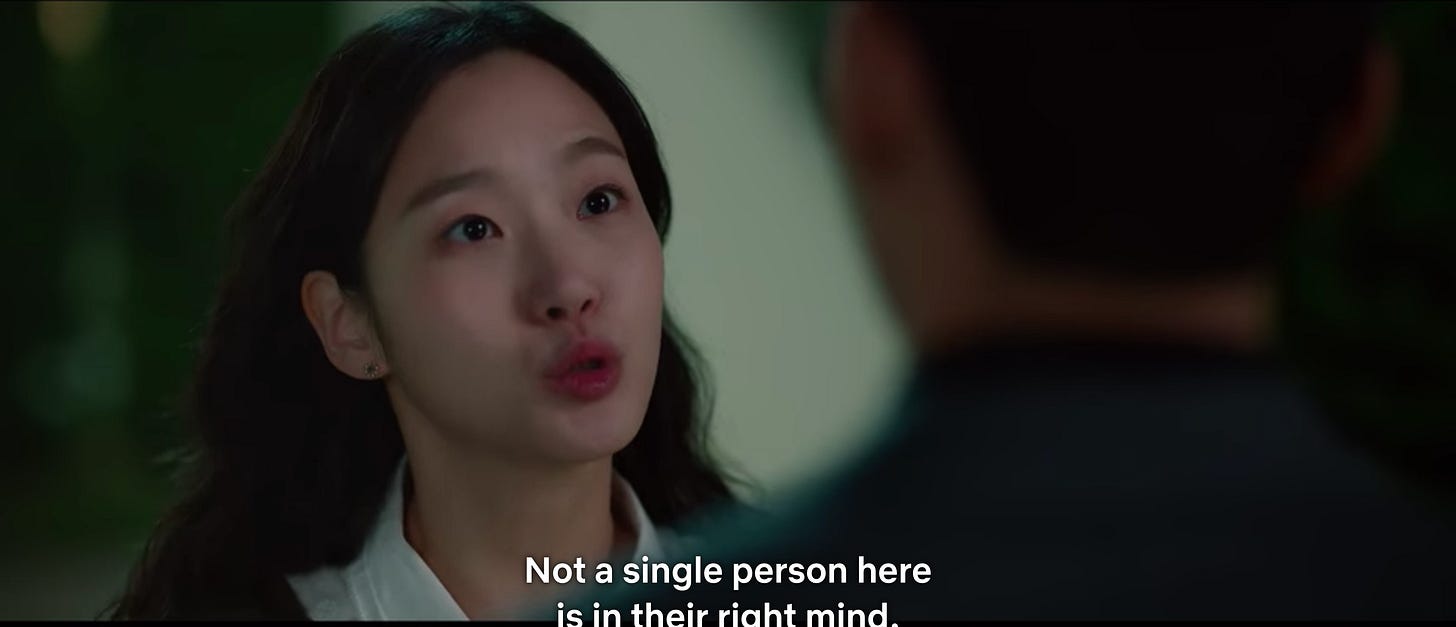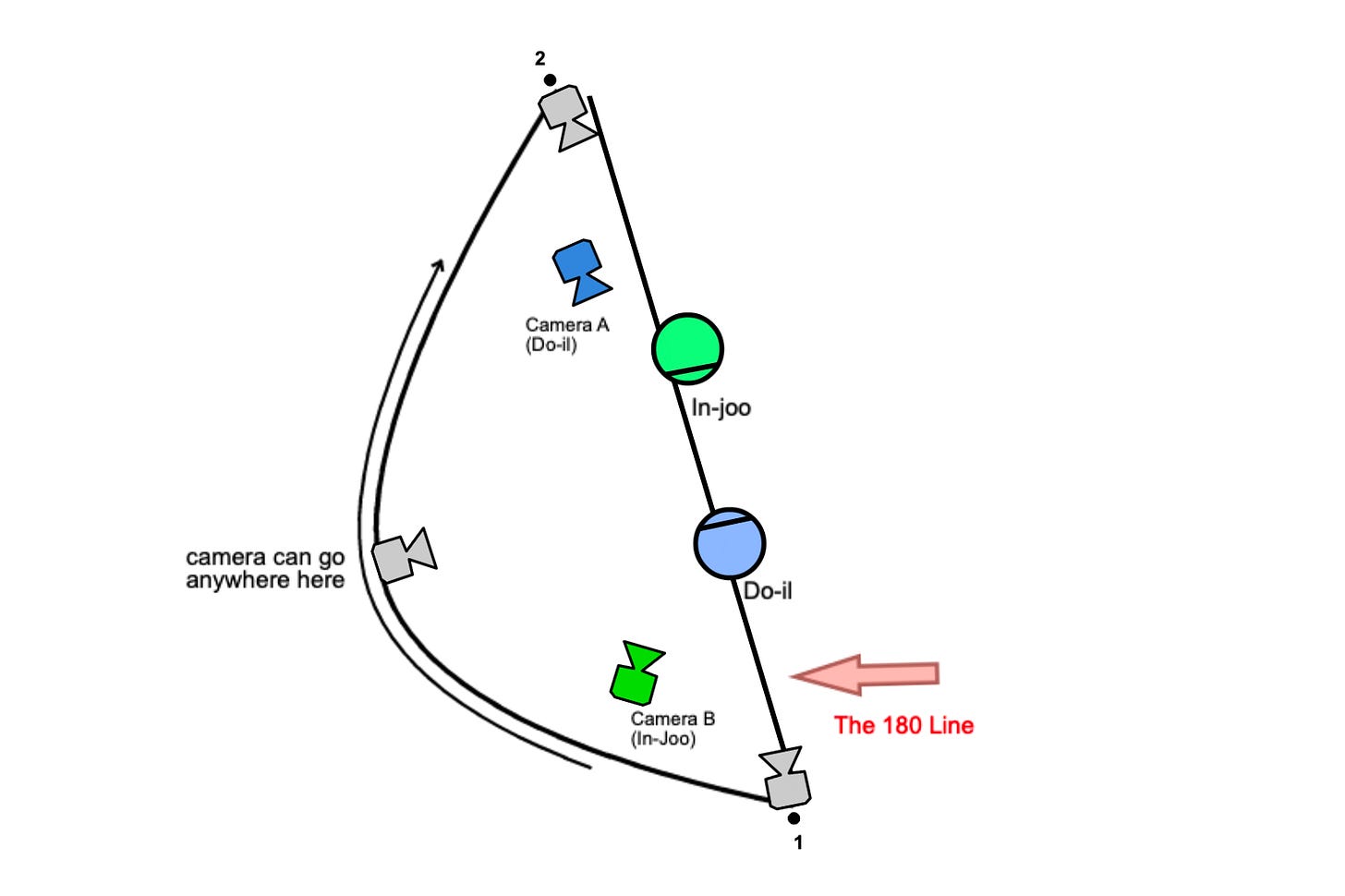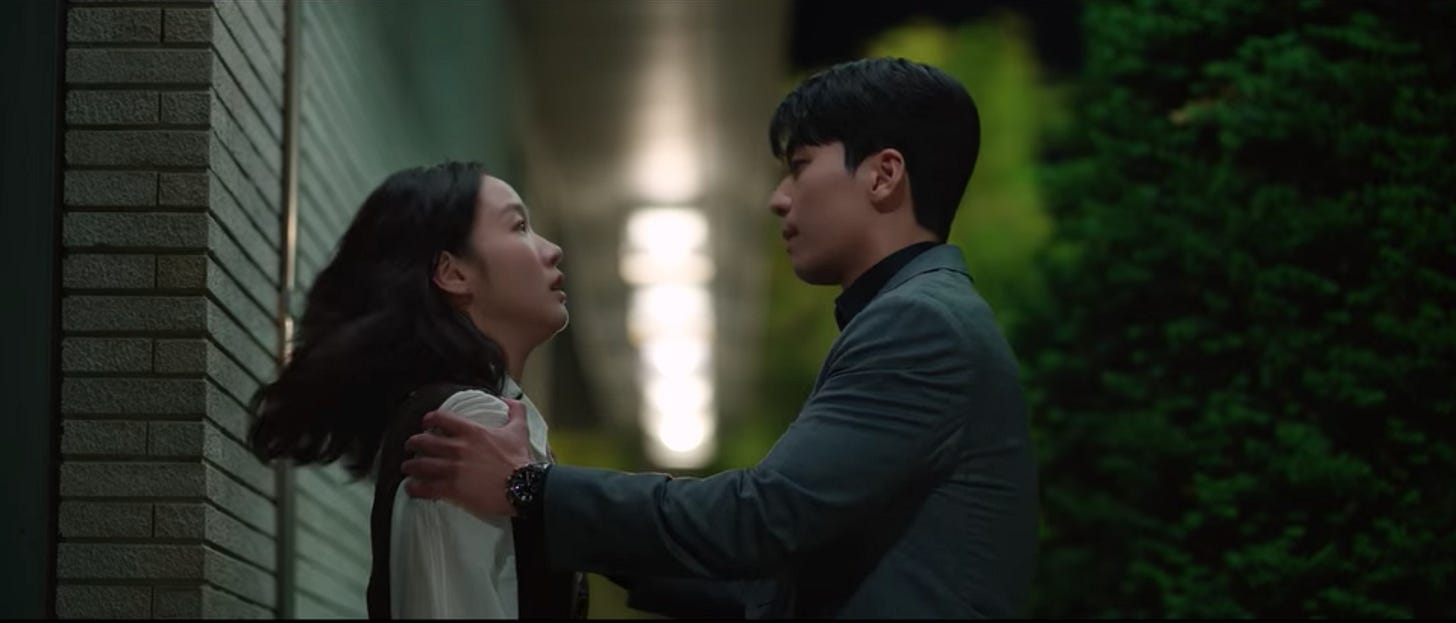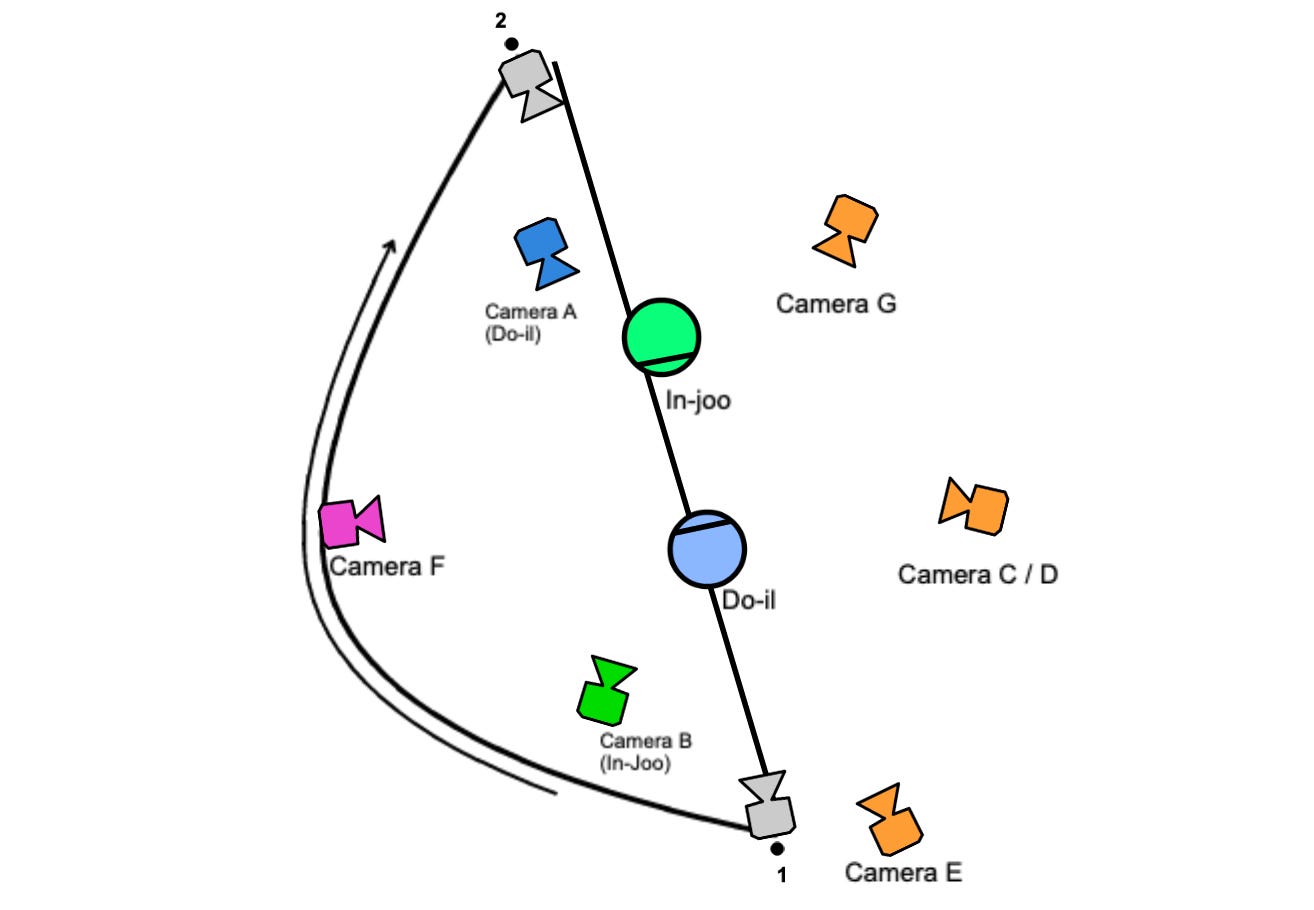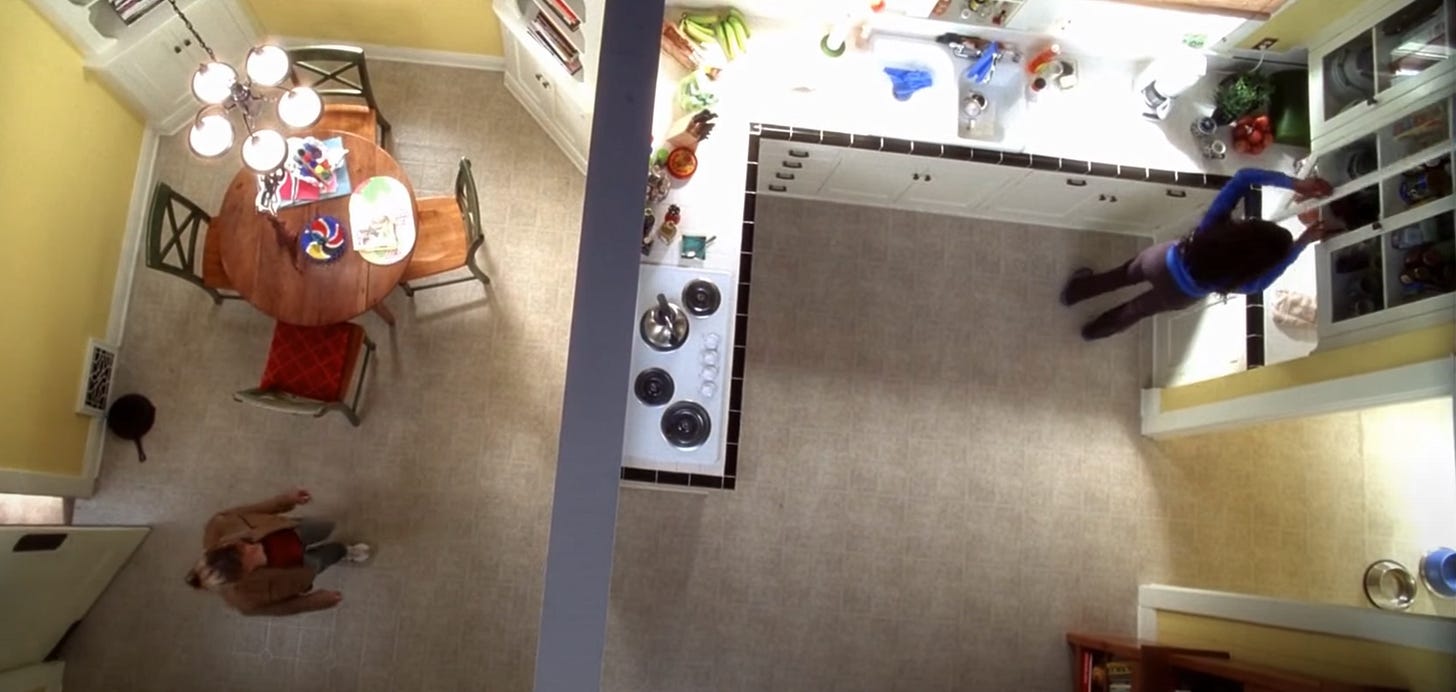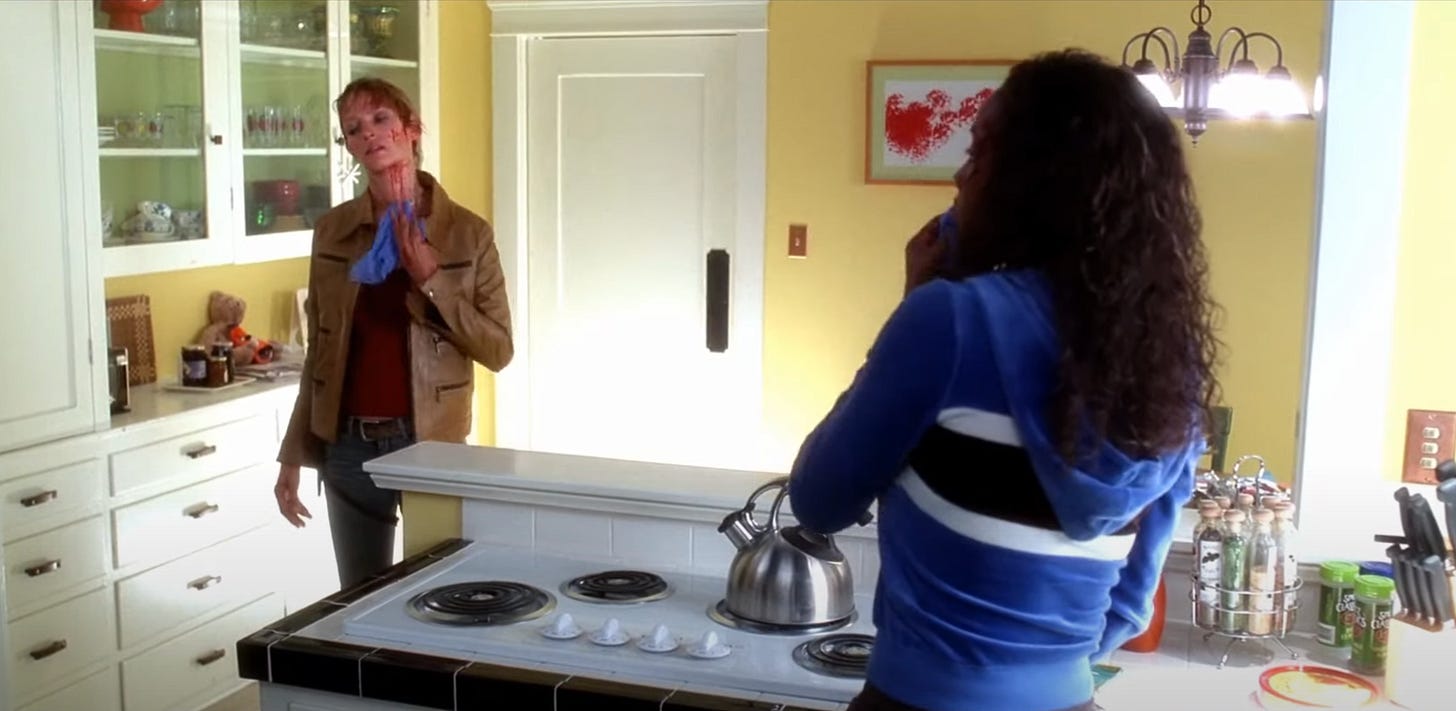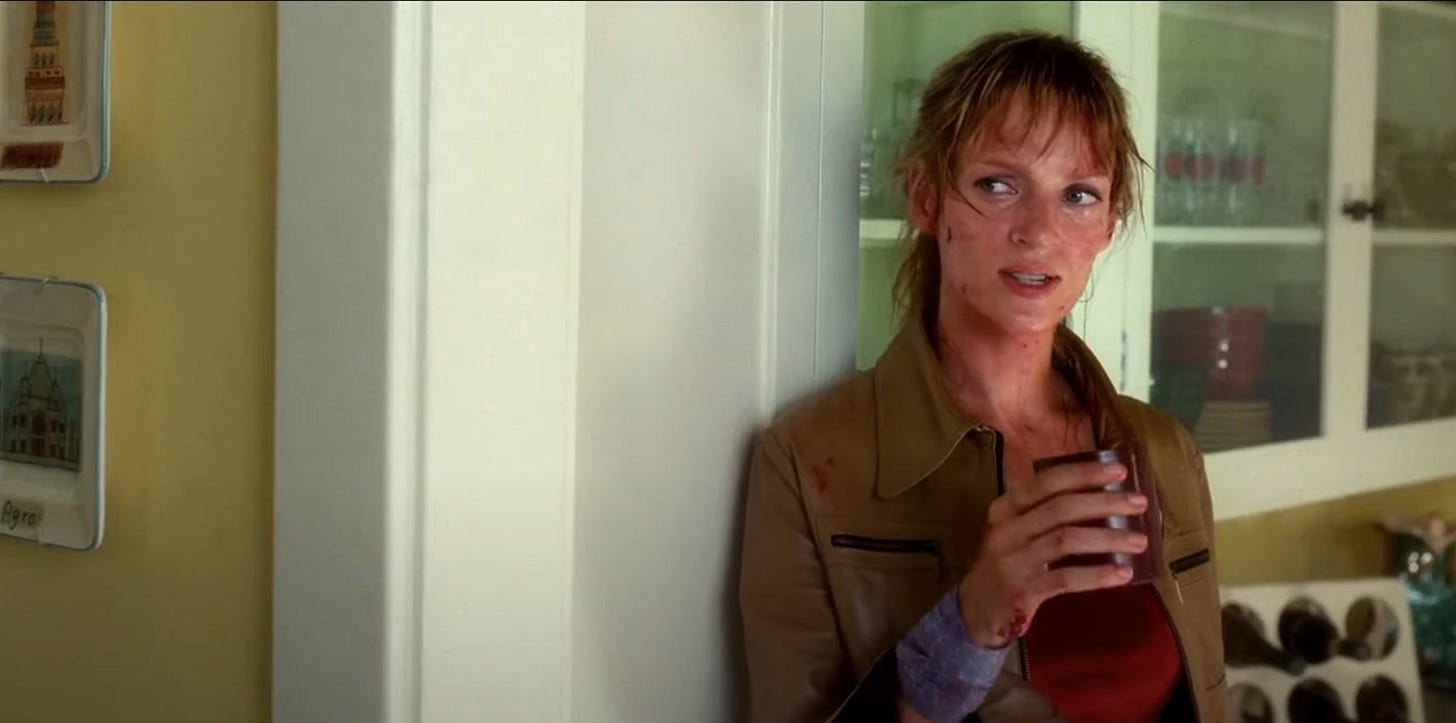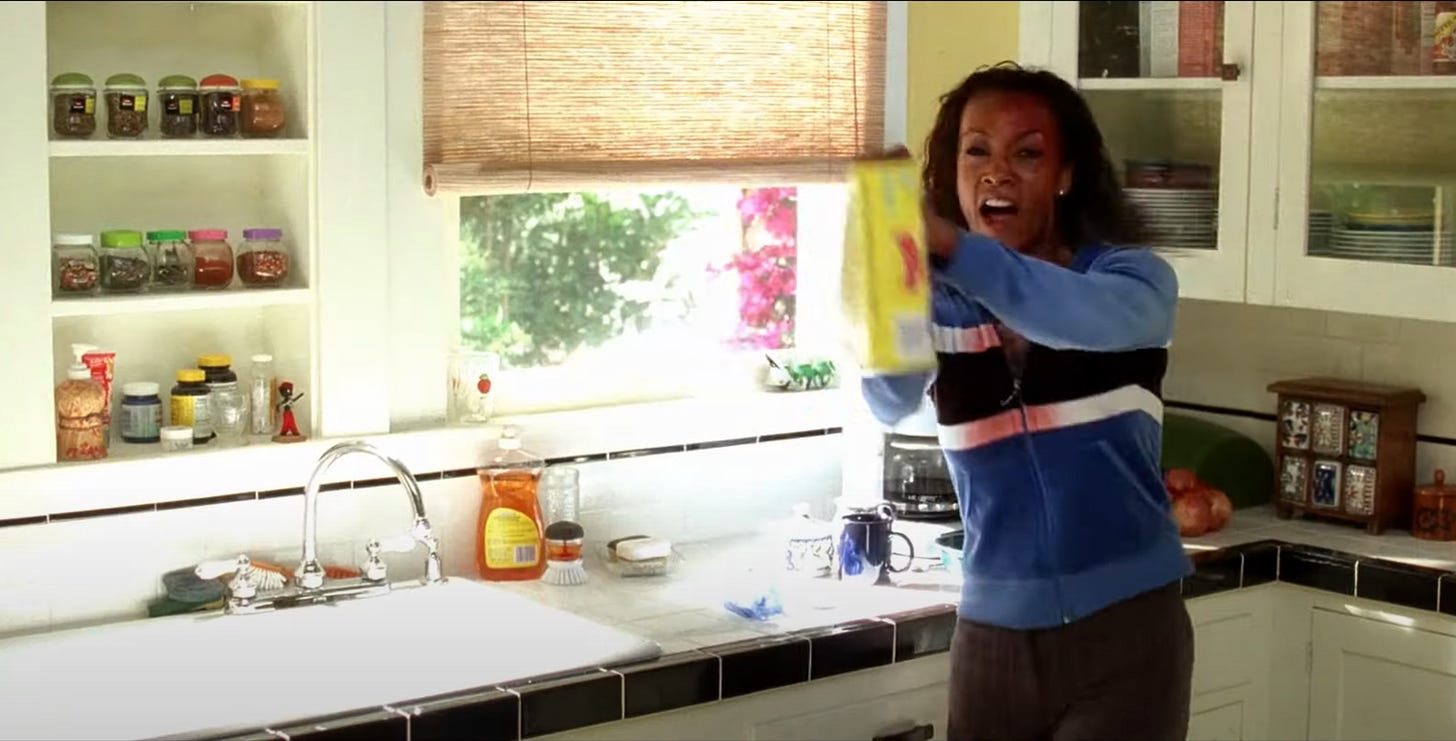As we talk more about ‘crossing the line’ in coming months, we wanted to set up a primer to refer to . . . Voilà!
What is Crossing the Line
You can go down technical rabbit holes from the Wiki, but the basic premise is:
when blocking a scene, draw an imaginary line across the set — the camera stays on one side of that line
if you cross the line without repositioning characters and/or camera during a shot (also known as ‘re-establishing the line’), you will confuse the audience
In a mostly-natural outcome of following this rule, whether the scene changes to wide, medium, or closeup; shot-reverse-shot, 2-shot; clean or dirty; etc. characters will stay on one side of frame for the duration of a scene
Character A Frame Right / Character B Frame Left
Example of NOT A Line Cross
This scene from Legends of Tomorrow 7.09 "Lowest Common Demoninator" (not a typo) is a simple demonstration of a scene which doesn’t cross the line
Even as shot size, singles and doubles and two-shots and over-the-shoulders, and where characters are facing, and introducing another character, all change, the camera stays on one side of the line, and characters stay on one side of the screen both in relation to each other and in their singles.
The red line on the top photo is the where the line is established; the camera never crosses it, the entirety of the scene.
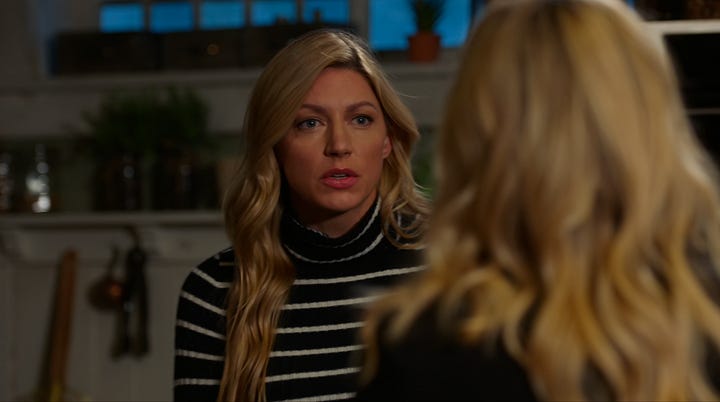
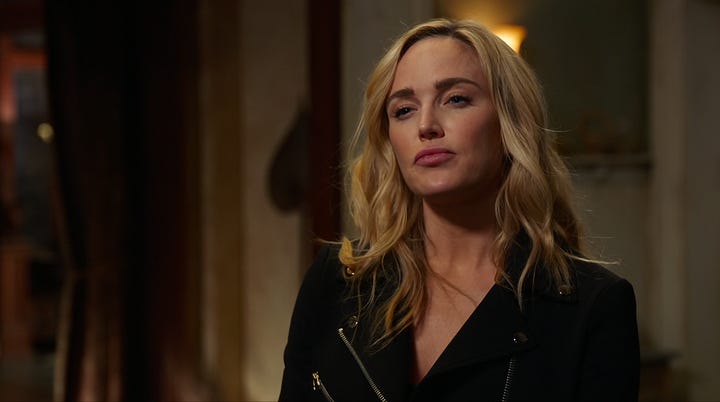
On the other hand . . .
Example of a Line Cross
This scene from Little Women (2022) establishes and then crosses the line a lot.
Background: Oh In-joo (Kim Go-eun) has discovered several powerful people who are actively perpetuating murder and a coverup. As Choi Do-il (Wi Ha-joon) tries to understand what In-joo has discovered, the line crosses disorient the audience, putting us in In-joo’s state of mind.
Setup: the scene establishes the line with Do-il Frame Right and In-joo Frame Left. It’s important to note in none of these shots do characters or camera move; they’re all stationary, so there’s no ‘re-establishing’ of the line.
If you were to look at this scene from above, here’s where the characters are, where the two shots are from, where the ‘line’ is established, and then where the camera could move to keep from ‘crossing the line.’
(You could still technically cross the line if you rearranged the actors badly with the camera in some of those places, but those are edge cases we’re not getting into now!)
After a few shots back and forth of their conversation, we get this, where the camera jumps across the line, and also puts In-joo Frame Right (Camera C).
The next few shots continue with In-joo Frame Right (Photos 1 and 2, Camera C / D / E) before the camera suddenly leaps across the line again (Photo 3 below, Camera F), then immediately jumps back (Photo 4 below, Camera C / D / E) before adding another angle to the mix (Photo 5 below, Camera G).
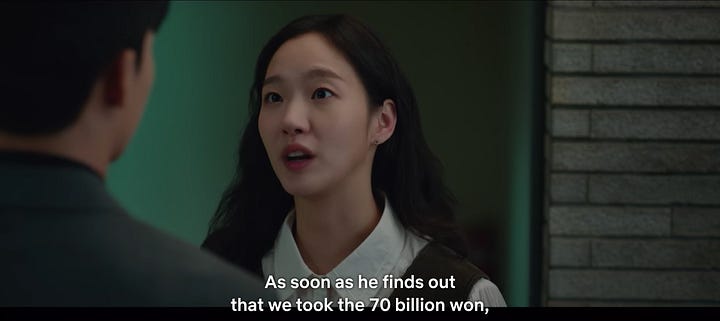
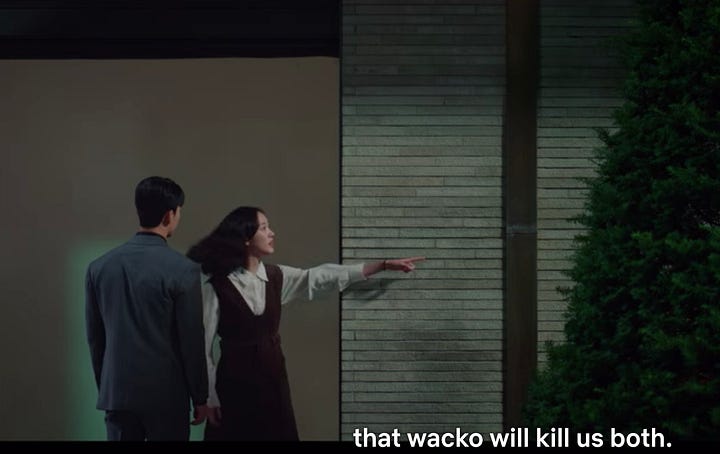
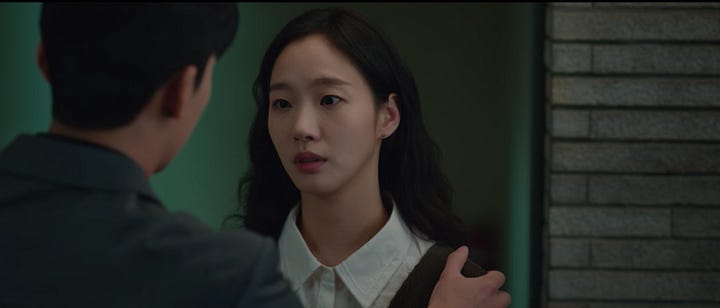
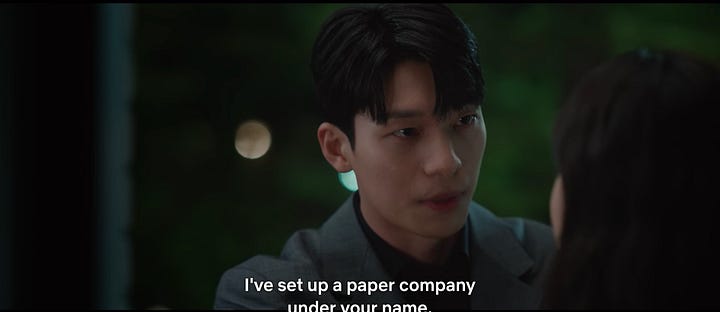
They even throw in a fun shot with a mirror! (below) By this point the scene has crossed the line so many times it’s unclear where the mirror is; but again for this scene, it’s intentional.
The scene has ‘given up’ the clarity of the 180 line in favour of giving the audience the feeling of In-joo’s panic.
Because it’s a scene where character location to each other isn’t so important — eg. a fight or chase scene, or a scene which needs to establish location geography for following scene(s) — there’s no real risk to doing so.
To Cross or Not To Cross
As seen in the Legends example above, once you establish a side of frame for a character, you usually keep them on that side so long as both character and camera is stationary. Exceptions and workarounds abound, though.
One way to avoid a line cross is simply keep moving! A 360º like the Widows gym scene means the audience remains aware of roughly where characters are at all times, just as if they were walking around in a space.
Reestablishing the Line
You can also re-establish the line by moving the camera once within a shot, and then return to using stationary shots.
Or you can keep the camera still and let characters reestablish themselves within a shot, and then cut to a new shot; for example look at our breakdown on how Mars Express reblocks without crossing the line — it’s still important in animation (and in an animated scene which uses reflections no less!)
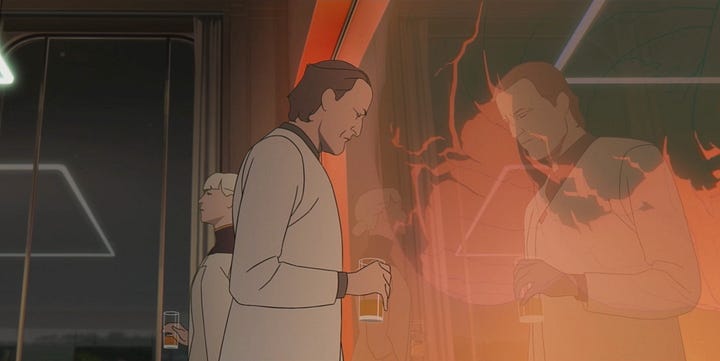
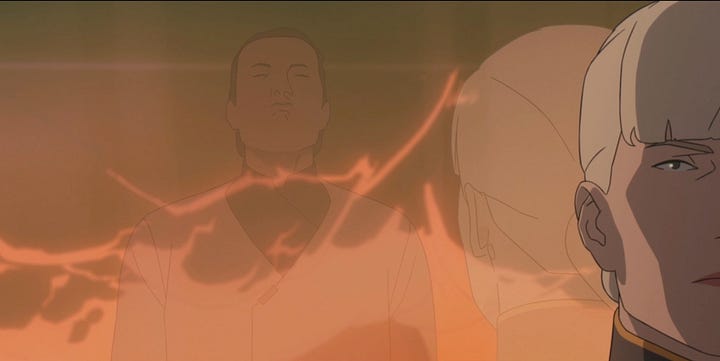
When Breaking The Rule Is Totally Fine!
Some scenes may intentionally break the rule to unbalance us, as Little Women does.
Others may feel like they break the rule even when they don’t; you can shift someone to one side of frame without crossing the line (as they do in a Doctor Who scene we’re looking at soon), but that can be tricky, and you may confuse the audience even if it’s technically not a line cross.
Meanwhile some scenes break the rule without feeling confusing at all! This is generally in one of two situations:
The frame is covered with another element which constantly orients us.
An obvious point of reference can (help) remove the need to carefully orient the audience via staying on one side of the line. Some examples include drastically different wall colours / backgrounds behind two characters, or jail bars in the foreground (see this scene, which breaks down the line cross via director’s commentary).The scene keeps a distinguishing element between characters to orient us. An example is the Kill Bill kitchen chat/fight where the wall / kitchen island serves as a marker of where everyone is at any given time. (It helps, though not required, that wider shots and a birds-eye view oriented us to the kitchen on entry.)
The below shots never confuse us even though The Bride (Uma Thurman) jumps from Frame Left to Frame Right and then Copperhead (Vivica A. Fox) is also Frame Right.
Additional Considerations
It’s very ‘in’ right now for a camera to never sit still, especially in attempts to convey story momentum and/or a sense of urgency.
But movement can be easily overused, come at the expense of other elements, inject restlessness instead of momentum . . . or create problems in the edit, eg. if characters and/or camera move around significantly, your coverage must have good continuity so your edit can flow properly.
Even then, if you want to cut a chunk of dialogue (for time or acting or any number of reasons), you may realise it also cuts out the chunk where you’ve re-established your 180 line.
Takeaways
Ultimately, rules are made to be broken! Whether planned or accidental, for dramatic effect, because of logistics, to underline a tonal or character, shift line crosses are often effective.
Sure, sometimes the effect could be confusing or disastrous . . . but what’s cinematic fun without a little risk?

